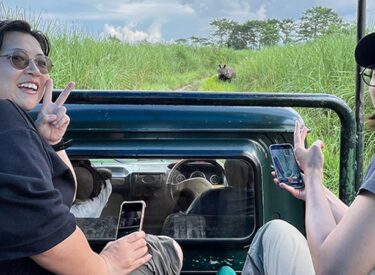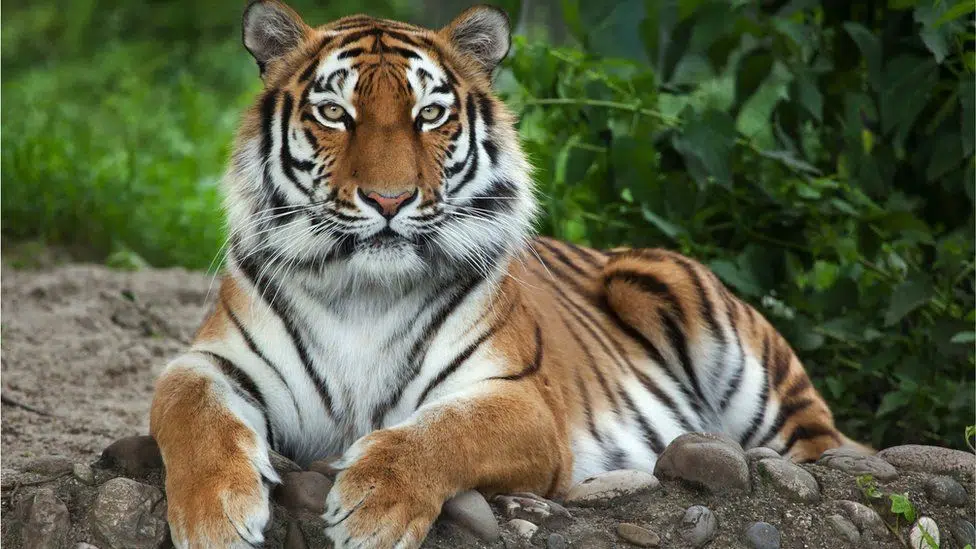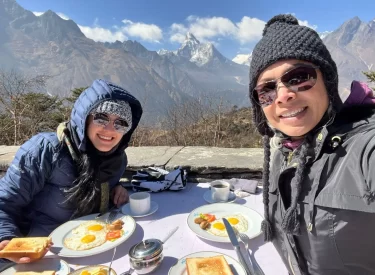Kathmandu Day Tour
based on 178 reviews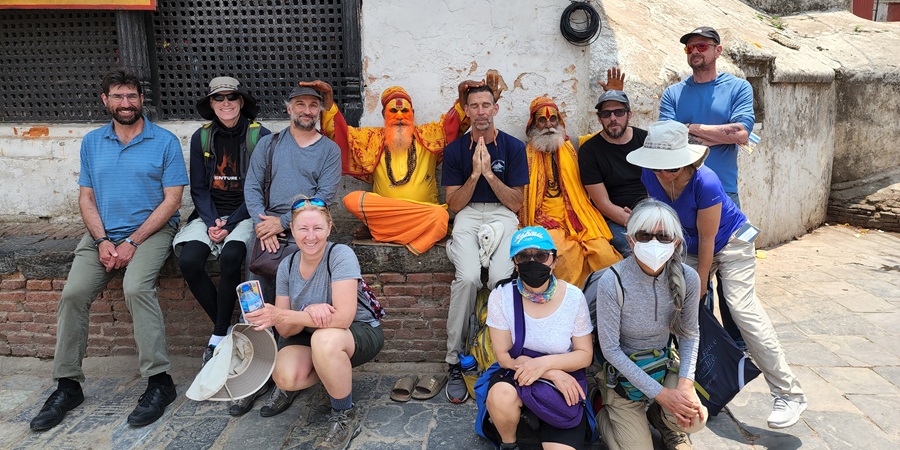
Overview of Kathmandu Day Tour
Discover the heart of Nepal with our Kathmandu Day Tour – a perfect, full-day guided experience in the vibrant capital. This tour is designed to be affordable and suitable for everyone, whether you’re a solo adventurer, a family, or travelling with friends. Explore Kathmandu’s rich culture and history as we take you through the ancient wonders of Swayambhunath, Pashupatinath, Boudhanath, and the historic Kathmandu Durbar Square.
Our Best Kathmandu Day Tour is more than just a trip; it’s an opportunity to immerse yourself in the city’s unique blend of spirituality, heritage, and beauty. Join us for a day packed with unforgettable experiences tailored to give you a deep and authentic glimpse of Kathmandu.
Itinerary of Kathmandu Day Tour
Option 1: Kathmandu Day Tour Full Itinerary (Including Pashupatinath Aarati)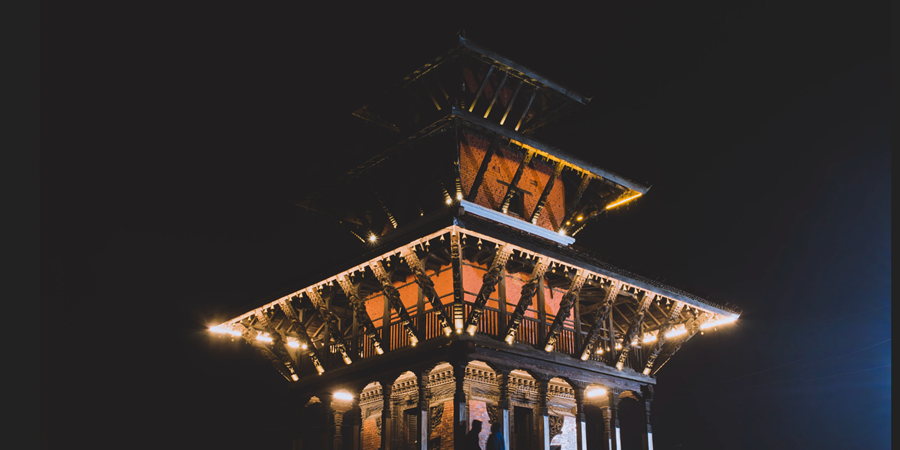
- 11 am: Departure from the hotel and transfer to Kathmandu Durbar Square.
- 1 pm: Completion of Kathmandu Durbar Square sightseeing. Departure for Swayambhunath.
- 3 pm: Conclude Swayambhunath’s visit and proceed to Boudhanath.
- 5 pm: Finish exploring Boudhanath and then drive to Pashupatinath.
- 7 pm: Complete the Pashupatinath visit, including the Aarati experience, and return to the hotel.

Option 2: Kathmandu Day Tour Early Start Itinerary (Excluding Pashupatinath Aarati)
- 10 am: Departure from the hotel.
- Noon: Complete the exploration of Kathmandu Durbar Square and proceed to Swayambhunath.
- 2 pm: Finish the Swayambhunath visit and head towards Boudhanath.
- 4 pm: After visiting Boudhanath, drive to Pashupatinath Temple.
- 6 pm: Conclude your visit to Pashupatinath and return to the hotel.

Added Insights
Includes/Excludes
What's Included?
- Private Vehicle with Driver and Fuel: Experience the convenience of a private vehicle with a skilled driver, ensuring a smooth Kathmandu day tour.
- Experienced English-speaking Tour Guide: Discover the beauty of Kathmandu with the guidance of an experienced English-speaking tour guide, making your Kathmandu day tour memorable.
What's Excluded?
- Entry Fees: Please be aware that the entry fees, amounting to NPR 2600 per person for various sites, are not part of the tour package and should be borne by the tourists separately.
- Personal Expenses: Expenses related to personal meals, beverages, and souvenirs are not covered by the tour package.
- Tipping for Driver and Guide: Gratuity for your driver and guide is not included in the package cost. It is customary to offer a tip as a token of appreciation for their service.
- Anything Not Included in Included List: Any services, activities, or items not explicitly mentioned in the “Included” section are excluded from the tour package.
Essential Information - Kathmandu Day Tour
Explore the Essence of Nepal with our Kathmandu Day Tour, featuring:
- Mystical Swayambhunath: Delve into the ancient wonders of the ‘Monkey Temple’, a beacon of spirituality offering breathtaking city views and rich Buddhist and Hindu heritage.
- Sacred Pashupatinath: Experience the solemn beauty of one of the holiest Hindu temples, a marvel of religious architecture on the serene banks of the Bagmati River.
- Majestic Boudhanath: Immerse yourself in the tranquil ambience of one of the world’s largest stupas, a central point of Tibetan Buddhism surrounded by monastic culture and vibrant markets.
- Historic Kathmandu Durbar Square: Step back in time at this UNESCO World Heritage Site, a splendid showcase of medieval Nepalese architecture, rich history, and intricate artistry in the city’s heart.
Kathmandu Durbar Square

Kasthamandap (Maru Satta)
Explore the historic Kasthamandap or Maru Satta, a pivotal part of your Kathmandu Day Tour. Rebuilt after the 2015 earthquake, this landmark dates back to the 7th-century Lichhavi era. Its name, translating to ‘Wood-Covered Shelter’, alludes to its unique construction from a single Sal tree. With its shrine to Gorakshanath, the site is a cornerstone of Kathmandu’s cultural and architectural heritage, making it a must-visit on any Kathmandu Full Day Tour.
Kabindrapur (Dhansa Bhavan)
Kabindrapur, also known as Dhansa Bhavan, is a highlight of the Kathmandu Day Tour with Guide. Built-in 1672 AD by King Pratap Malla, this artistic marvel near Hanuman Dhoka showcases multi-storey traditional Nepalese architecture. A visit here offers insight into Kathmandu’s royal past, making it a vital feature of the Best Kathmandu Day Tour.
Hanuman Dhoka
The Hanuman Dhoka complex, integral to Kathmandu Durbar Square, is a treasure trove of history. Dating back to the mid-16th century and expanded in the 17th century by King Pratap Malla, the complex symbolizes the reigns of the Malla and Shah dynasties. Despite damage from the 2015 earthquake, it remains a significant stop on any Kathmandu Day Tour Private.
Mohan Chok
Mohan Chok, dating back to 1649 in the Hanuman Dhoka palace, is a testament to the Malla kings’ lifestyle. Known for its Sun Dhara waterspout and connection to Sundari Chok, this courtyard is a fascinating part of your Solo Traveler Kathmandu Day Tour or Family-friendly Kathmandu Day Tour.
Museums
The Tribhuwan and King Mahendra Memorial Museums within Hanuman Dhoka offer a deep dive into Nepal’s royal heritage. These museums, featuring personal and state artefacts, are highlights of the Unique Kathmandu Day Tour, providing a comprehensive look at the Shah dynasty’s impact.
Taleju Temple
The Taleju Temple, built in 1549 AD by King Mahendra Malla, is the tallest structure in Kathmandu Durbar Square. Open to the public once a year during Dashain; this temple is a significant part of any Things to Do in Kathmandu in a Day itinerary.
Kumari Temple
The 17th-century Kumari Temple is an iconic stop on your Kathmandu Full-Day Tour. As the residence of the Living Goddess, Kumari, this temple represents a unique blend of Hindu and Buddhist traditions, a vital aspect of the Best Kathmandu Day Tour.
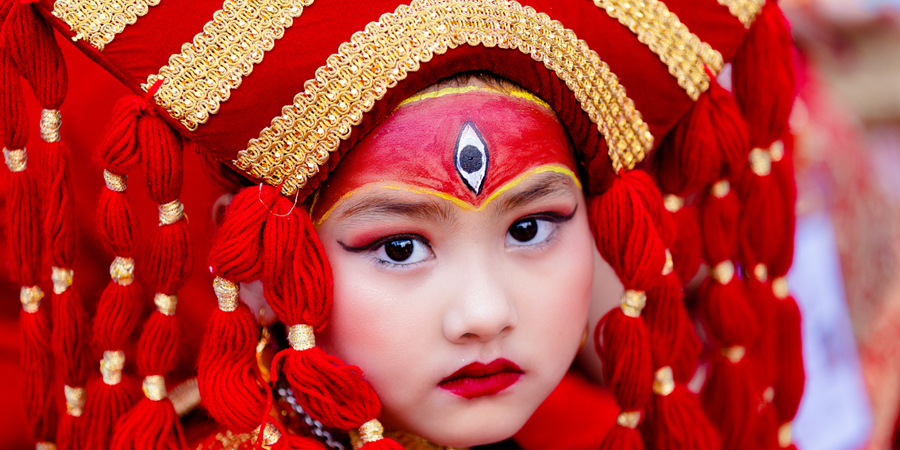
Jagannath Temple
Famous for its 16th-century erotic carvings, Jagannath Temple is a notable part of Kathmandu Durbar Square. Its architecture and controversial art make it a compelling feature of any Kathmandu Day Tour Private.
Nasal Chowk
With its rich Malla dynasty history, Nasal Chowk is essential to the Kathmandu Day Tour with Guide. This courtyard has witnessed numerous historical events, making it a highlight of the Affordable Kathmandu Day Tour.
Narsingha Statue
The Narsingha statue, erected in 1673 by Pratap Malla, represents Lord Vishnu’s man-lion avatar. Its historical and religious significance makes it a key attraction in Kathmandu Durbar Square during your Best Kathmandu Day Tour.
Swet Bhairav
Swet Bhairav, a representation of Lord Shiva, is a unique feature of the Kathmandu Day Tour Private, particularly during the Indra Jatra festival. This temple’s once-a-year opening adds an exclusive element to your Kathmandu Full Day Tour.
Shisha Baithak
Shisha Baithak, showcasing the Malla throne and Shah kings’ portraits, is a unique part of Kathmandu Durbar Square, making it a must-visit during the Family-friendly Kathmandu Day Tour.
Tribhuwan Museum
The Tribhuwan Museum, with its collection of King Tribhuwan’s belongings, offers a unique perspective on Nepal’s history, a highlight of the Solo Traveler Kathmandu Day Tour.
Kal Bhairav
The Kal Bhairav statue, a 17th-century masterpiece, represents Lord Shiva’s fearsome aspect. This imposing sculpture is significant in exploring Kathmandu Durbar Square on any Kathmandu Day Tour.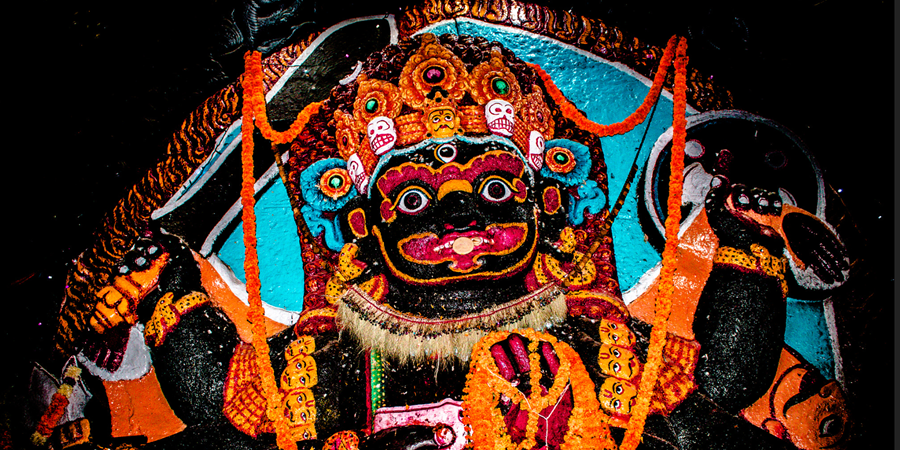
Each landmark offers an immersive journey into Kathmandu’s rich tapestry of culture, history, and spirituality, making your tour an experience filled with discovery and enlightenment.
Swayambhunath: A Spiritual Journey Post-Kathmandu Durbar Square
After the rich cultural experience at Kathmandu Durbar Square, the next stop in your Kathmandu Day Tour is the serene and sublime Swayambhunath, commonly known as the Monkey Temple. This ancient religious complex, a must-see destination in the Best Kathmandu Day Tour, sits atop a hill in the Kathmandu Valley and offers a spiritual respite from the city’s hustle.
Historical and Mythological Significance
Swayambhunath’s history, rooted in the Licchavi period, is steeped in Buddhist and Hindu traditions. According to the Swayambhu Purana, the site originated from a lotus in a great lake, giving rise to its name, meaning ‘Self-Created’. This legend enhances its allure in the Unique Kathmandu Day Tour itinerary. Notably, Emperor Ashoka is believed to have visited in the 3rd century BCE, adding to its historical gravitas.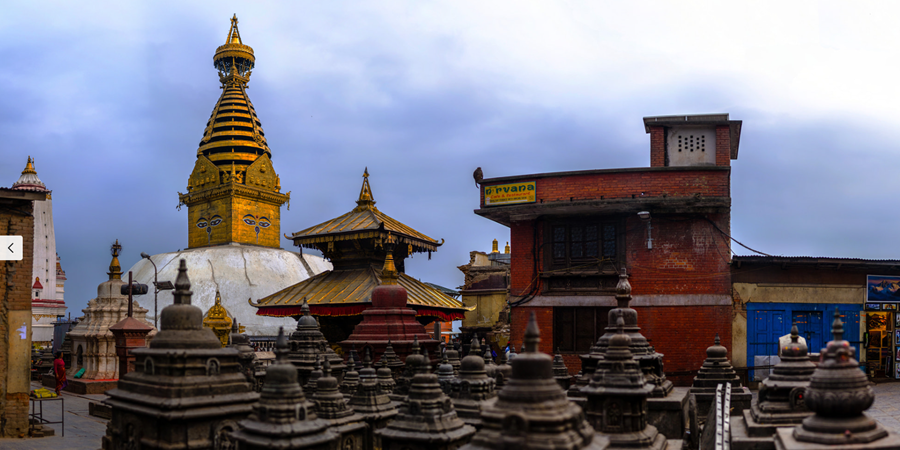
Architectural Splendor
The complex’s architecture, especially the stupa with Buddha’s eyes symbolizing wisdom and compassion, highlights the Kathmandu Full Day Tour. The dome at the stupa’s base represents the world, while the thirteen tiers leading to the Gajur symbolize the stages to enlightenment, making it a focal point in the Things to Do in Kathmandu in a Day.
A Pilgrimage Experience
For those on a Kathmandu Day Tour with Guide, the experience of climbing the eastern stairway to Swayambhunath is a physical journey and a spiritual ascent. The sight of the Vajra and the panoramic views from the top provide a profound sense of peace and enlightenment, ideal for both Solo Travelers’ on Kathmandu Day Tours and Family-friendly Kathmandu Day Tours.
Cultural Harmony
The site, revered by Buddhists and Hindus, exemplifies Nepal’s religious harmony. The presence of holy monkeys and the tale of Manjushri further add to its mythical charm, making it an essential stop in any Affordable Kathmandu Day Tour.
The Tale of the Holy Monkeys
Swayambhunath’s unique character is further enhanced by the hundreds of monkeys that roam its premises. These monkeys are considered sacred, stemming from a fascinating legend involving Manjushree, the bodhisattva of wisdom.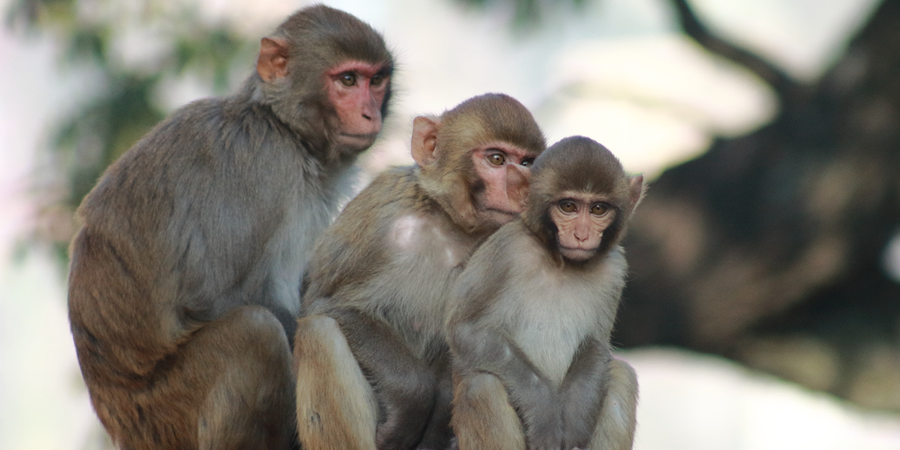
As the story goes, while Manjushree was raising the temple hill, the lice in his hair miraculously transformed into these monkeys. This legend is a vital element in your Kathmandu Full Day Tour, offering a glimpse into the mystical aspects of Nepalese spirituality.
Prayer Flags: Lung ta and Darchog – Symbols of Hope and Spirituality
On your Kathmandu Day Tour, you will encounter the vibrant and meaningful Tibetan prayer flags, an integral part of the region’s spiritual landscape. Lung ta (horizontal) and Darchog (vertical) flags are cultural artefacts and symbols of hope, peace, and spirituality.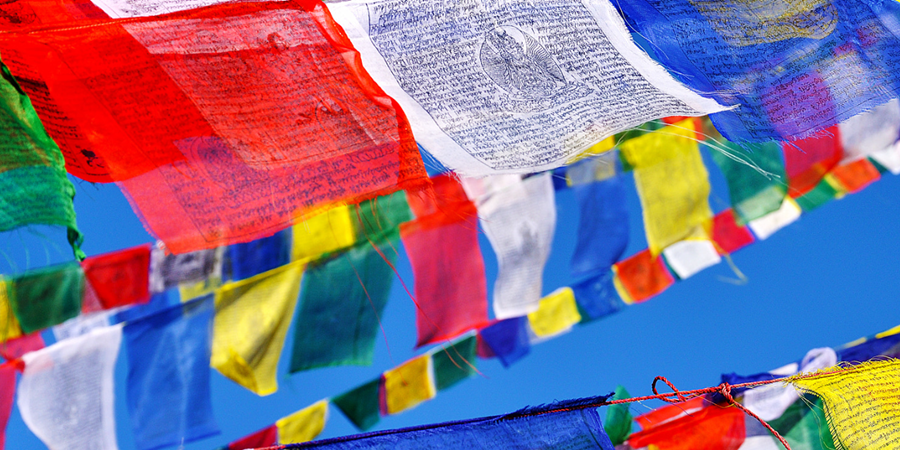
Lung ta – The Wind Horse Flags
Lung ta, meaning “Wind Horse” in Tibetan, are typically square or rectangular cloths strung horizontally along a thread. These flags often fluttered high above temples, monasteries, stupas, and mountain passes in the Kathmandu Valley. With its vivid colours and symbols, each flag is believed to carry prayers and good fortune on the wind, spreading positive energy and compassion. This tradition is captivating to explore in the Best Kathmandu Day Tour.
Darchog – The Vertical Prayer Flags
Darchog flags are large, single rectangular pieces attached vertically to poles. Commonly planted in the ground, on mountains, or on rooftops, Darchog flags are an evocative sight, waving against the backdrop of Nepal’s natural beauty. These flags are linked to the Dhvaja and symbolize a connection to the divine, an aspect that enriches any Kathmandu Full Day Tour.
Colours and Order: A Symphony of Symbolism
The prayer flags are arranged in a specific order of five colours, each representing the five elements and the Five Pure Lights in Buddhist philosophy. This colour arrangement – blue, white, red, green, and yellow – symbolizes sky, air, fire, water, and earth, respectively. These elements are foundational in Traditional Tibetan medicine. They are believed to bring balance and harmony, which adds depth to your experience on a Kathmandu Day Tour with a Guide.
Symbols and Mantras: The Heart of the Flags
Central to Lung ta flags is the image of a horse bearing three flaming jewels, symbolizing the transformation from bad to good fortune and the three jewels of Buddhism – the Buddha, the Dharma, and the Sangha. Surrounding this are various mantras and prayers dedicated to deities, embodying compassion, wisdom, and strength. Understanding these symbols offers a glimpse into the rich tapestry of Tibetan spiritual practices for those on a Solo Traveler Kathmandu Day Tour or a Family-friendly Kathmandu Day Tour.
Tradition and Respect
In Tibetan culture, prayer flags are revered and treated with great respect. They symbolize a harmonious relationship between the elements, the environment, and the individual. As the colours fade and the fabric frays, the prayers are believed to be released into the universe, symbolizing the impermanence of life. This act of hanging new flags alongside old ones represents the cycle of life and renewal, a poignant reminder for all who visit.
Shantipur: The Mystical Shrine of the Immortal Saint
In Kathmandu’s rich spiritual landscape, visiting Shantipur, located northwest of the main Swayambhunath stupa, is a journey into legend and mysticism. This shrine, also known as Akashpur or ‘Sky Place’, holds a fascinating tale that captivates visitors on their Kathmandu Day Tour.
The Legend of Shantikar Acharya
Shantipur, though appearing as a simple structure, is steeped in cultural and historical significance. It is associated with the legendary figure Shantikar Acharya, a former king who transformed into a saint. According to legend, Shantikar, initially known as King Prachanda Dev, came to Swayambhunath as a pilgrim and later renounced his royal life to practice tantric rituals. This shrine, embodying the sky element, is thus a testament to his spiritual journey and is a must-see for those on a Kathmandu Full Day Tour.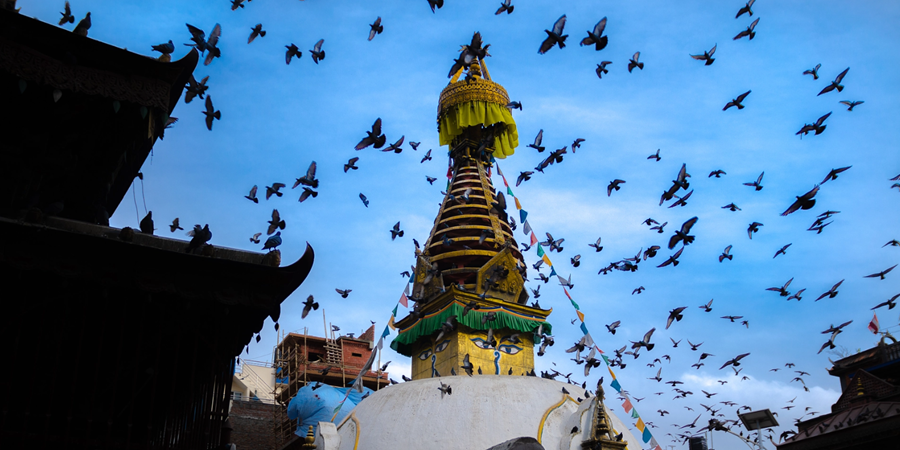
The Enigma of the Underground Chamber
The most intriguing aspect of Shantipur is the underground chamber, believed to be the meditation site of the immortal Shantikar Acharya. This chamber, always locked and shrouded in mystery, is said to have been the saint’s retreat since the 5th century. Visitors on a Kathmandu Day Tour with a Guide often feel an otherworldly atmosphere near the entrance to this hidden chamber, adding a layer of mystique to their experience.
Shantikar’s Immortal Presence and the Weather
Legend has it that Shantikar Acharya possesses control over the weather. It’s believed that the King would seek the saint’s help during the drought in Kathmandu. The story of King Partap Malla’s encounter with Shantikar in 1658, wherein he received a mandala to invoke rain, is a highlight for those on a Solo Traveler Kathmandu Day Tour or a Family-friendly Kathmandu Day Tour.
A Journey Through the Haunting Chambers
The path to the saint in the underground chamber is said to be daunting, with three floors and 27 rooms, each presenting its own terrifying trials. Frescoes inside the temple depict King Partap Malla’s perilous journey through rooms of bats, ghosts, and snakes, making Shantipur an intriguing destination in the Best Kathmandu Day Tour.
Veneration and Worship
Devotees visit Shantipur to offer worship with flowers and butter lamps, finding solace and awe in its legends. The interior paintings of the temple narrate these legendary stories, providing a visual treat to visitors and adding depth to the Unique Kathmandu Day Tour experience.
Resilience Through the Earthquake
Remarkably, Shantipur withstood the devastating 2015 earthquake in Nepal, though it sustained some cracks. This resilience further adds to the shrine’s mystical aura and significance in Kathmandu’s spiritual landscape.
Haratimata Temple at Swayambhunath: A Sanctuary of Compassion and Healing
Nestled within the sacred precincts of Swayambhunath, known as the Monkey Temple, is the Haratimata Temple, a revered site rich in legend and cultural significance. Integral to the Kathmandu Day Tour, this temple is not just a historical structure but a symbol of compassion and transformation.
The Legend of Haratimata in Swayambhunath
According to a legend dating back to the Licchavi king Brishamdev’s era, Haratimata, initially a Yakshini known for taking away children, transformed into a protector deity after an encounter with Lord Gautama Buddha. This temple, situated within the Swayambhunath complex, represents her transformation from a child-taker to a guardian of children, making it a profound stop in the Best Kathmandu Day Tour.
A Haven for Healing and Protection
Haratimata, revered as a guardian deity within Swayambhunath, is believed to protect and heal children. Devotees, especially parents with sick children, visit this temple to offer prayers, eggs, alcohol, prasad, and incense, seeking her blessings for healing. This tradition highlights the temple’s role in local faith and practices, a key aspect for those exploring Swayambhunath in a Kathmandu Full Day Tour.
The Cure for Ailments
There’s a widespread belief among the locals that worshipping Haratimata at Swayambhunath can cure diseases, mainly smallpox. This belief underlines her significance as a healing deity, adding spiritual depth to the Kathmandu Day Tour with Guide.
Ajima – The Grandmother Goddess
Haratimata, also known as Azima in the Newari language, translates to ‘grandmother’, reflecting her nurturing and protective nature. Her presence within the Swayambhunath complex adds a familial and caring dimension to the site, resonating particularly with participants in a Family-friendly Kathmandu Day Tour.
A Note of Respect
Visitors to the Haratimata Temple within Swayambhunath should note that photography inside this sacred space is prohibited. This rule is a part of the temple’s tradition and culture, emphasizing respect and reverence, an essential aspect for those on a Solo Traveler Kathmandu Day Tour to remember.
Dipankara Buddha Statue at Swayambhunath: A Link to the Ancient Past
Within the serene expanse of Swayambhunath, renowned for its spiritual significance in the Kathmandu Valley, stands the ancient statue of Dipankara Buddha. This statue, dating back to the 7th century, is a crucial element in the Kathmandu Day Tour, offering visitors a glimpse into the rich Buddhist heritage of Nepal.
Dipankara Buddha: The Enlightened Predecessor
Dipankara, known as the ‘Buddha of Light’, is revered as one of the past Buddhas who attained enlightenment before Gautama Buddha. His presence in Swayambhunath is particularly significant, symbolizing the continuity and depth of Buddhist tradition. This statue, about 10 feet tall, is a powerful representation of enlightenment and wisdom, making it a highlight for those on a Kathmandu Full Day Tour.
Location Within Swayambhunath
The Dipankara Buddha statue is situated behind a courtyard of small chaityas within the Swayambhunath complex. Its placement here is symbolic, surrounded by other critical religious structures, and adds to the spiritual ambience of the site. Visitors on a Kathmandu Day Tour with a Guide will find this statue a poignant reminder of the site’s long-standing religious history.
Connection to Shantipur Temple
Interestingly, there is a miniature statue similar to the Dipankara Buddha on the wall of the Shantipur temple, also within the Swayambhunath complex. This connection between the two structures highlights the integrated nature of the site’s spiritual elements, which fascinates participants in both Solo Traveler Kathmandu Day Tours and Family-friendly Kathmandu Day Tours.
A Symbol of Buddhist Heritage
The Dipankara Buddha statue is not just an artistic marvel; it’s a testament to the enduring legacy of Buddhism in the region. Its presence in Swayambhunath bridges the ancient past, offering a tangible connection to the early days of Buddhist enlightenment and teachings.
The Five Elemental Shrines of Swayambhunath: A Journey Through Panchapur
Swayambhunath, a revered site in Kathmandu, is not just a singular stupa but a complex comprising various shrines, each representing one of the five elements. This collective of shrines, Panchapur, adds a profound dimension to the Kathmandu Day Tour, offering insights into Buddhist cosmology and local beliefs.
Agnipur – The Shrine of Fire
Agnipur, consecrated by the sage Shantikar Acharya, is dedicated to protecting the area from fire-related disasters. With its dome structure, this shrine features the red face of the fire god Agni Bhairava. Marked by two small lions at its front, Agnipur is located in the northwest corner of the Swayambhunath complex. Agni, the god of fire, is revered as the messenger carrying burnt offerings to the gods in heaven, a significant aspect for visitors on a Kathmandu Full Day Tour.
Basupur – The Earth Element Shrine
Situated in the southeastern corner of Swayambhunath is Basupur, home to the Vasundhara Mandir or temple. This shrine is dedicated to Vasundhara, the Buddhist Goddess of Wealth and Prosperity, symbolizing the earth element. Vasundhara, depicted in a playful posture known as lalitasana, emphasizes prosperity and abundance, making Basupur a key point of interest in the Best Kathmandu Day Tour.
Shantipur / Sambarpur – The Shrine of the Sky
Also known as Akashpur or ‘Sky Place’, Shantipur/Sambarpur represents the fifth element – the sky. Located northwest of the main stupa, this shrine is associated with a fascinating legend involving a sage living since the 5th century, a captivating story for those on a Kathmandu Day Tour with a Guide.
Nagpur – The Water Element Shrine
Nagpur, a pit in front of the Amoghasiddhi Buddha and on the northern side of the Swayambhunath stupa, is dedicated to the water element. This rectangular pit with a snake idol at the bottom was built to appease the snake spirits of the Kathmandu Valley. The creation of Nagpur, deeply intertwined with local legends, is a highlight for Solo Traveler Kathmandu Day Tours and Family-friendly Kathmandu Day Tours.
Vayupur – The Air Element Shrine
In the southwest corner of Swayambhunath is Vayupur, which is related to the air element. Built by Shantikar Acharya, this shrine is dedicated to eliminating problems associated with the element of air. ‘Vayu’, meaning air in the local language, emphasizes the significance of this element in daily life and spiritual practices.
Nagpur at Swayambhunath: A Tribute to the Serpent Kings
In the rich tapestry of legends that adorn Swayambhunath, the story of Nagpur stands out, reflecting the deep reverence for serpent deities in Kathmandu’s spiritual traditions. This site, integral to the Kathmandu Day Tour, is not just a pit with a snake idol but a symbol of a historical saga involving kings, sages, and serpent deities.
The Tale Behind Nagpur’s Creation
Nagpur’s origin dates back to King Gunakamadeva’s reign in Kathmandu. Displeased with the King’s neglect of his duties, the gods withheld rain, leading to a severe drought. Desperate, the King sought the wisdom of the great sage Shantikar Acharya at Swayambhunath. Shantikar proposed a solution involving a “Naga Sadhana”, a ritual needing the participation of the Nagarajas, the snake kings. This narrative is fascinating for those on a Kathmandu Full Day Tour.
The Challenge of the Naga Sadhana
The Naga Sadhana required the cooperation of all Nagarajas, yet the King of the Nagarajas, Karkotaka, initially refused to participate. The King’s efforts and Shantikar’s guidance finally brought Karkotaka to the ritual, a key element in the sadhana’s success. This part of the story adds a layer of intrigue for visitors on a Kathmandu Day Tour with a Guide.
The Ritual and the Resolution
The sadhana, initially unsuccessful, revealed a need for a significant sacrifice: the blood of the Snake King Karkotaka. The ritual was repeated with his consent, successfully bringing rain to Kathmandu. This crisis resolution highlights the intertwined fate of humans and divine beings. This concept resonates with those on both Solo Traveler Kathmandu Day Tours and Family-friendly Kathmandu Day Tours.
The Creation of Nagpur
Years later, faced with another drought, the people of Kathmandu remembered the serpent deities’ role in bringing rain. Despite initial challenges, the hymns chanted by King Gunakamadeva and sage Shantikar appeased the serpent king once more, ending the drought. In honour of the serpents’ contribution, Nagpur was constructed at Swayambhunath, serving as a tribute to the serpent kings, particularly Karkotaka.
Nagpur’s Significance Today
Today, Nagpur stands as a testament to this legendary tale, symbolizing the respect and gratitude of Kathmandu’s people towards the serpent deities. Its presence within Swayambhunath adds a unique dimension to the site, intertwining natural elements with spiritual beliefs. For visitors, it represents a fascinating blend of mythology, history, and cultural reverence.
Pratappur and Anantapur Temples at Swayambhunath: Monuments of History and Resilience
Located within the Swayambhunath complex, the Pratappur and Anantapur temples stand as historical beacons, reflecting Nepal’s architectural grandeur and the resilience of its heritage. These temples, significant in the Kathmandu Day Tour, are more than just religious structures; they are symbols of victory and dedication.
Architectural Splendor and Historical Significance
Built-in the shikar style, characteristic of Nepali architecture, Pratappur and Anantapur are distinguished by their tall, bullet-shaped structures. Erected by King Pratap Malla in the 17th century, these temples were constructed to commemorate his victory over Tibet. The twin bells with inscriptions narrating this triumph are key attractions for those on a Kathmandu Full Day Tour.
Tribute to Royalty
Anantapur, named after King Pratap Malla’s queen Ananta Priya, and its counterpart Pratappur, dedicated to the king himself, symbolize the royal legacy. The ability to ascend inside Anantapur offers a unique experience, differentiating it from Pratappur. This architectural feature, known as “Ganthakoot Dewal” in Nepali, adds to the allure for visitors on a Best Kathmandu Day Tour.
Challenges and Restoration
Over the centuries, the Pratappur temple has faced multiple adversities, including damage by fire, lightning, and the devastating 2015 earthquake. These events, particularly the mysterious fire and the earthquake, led to significant damage and the need for restoration. The reconstruction of Pratappur, which involved meticulous work by craftsmen and labourers over seven months, is a testament to Nepal’s commitment to preserving its cultural heritage. The restoration process, costing around 4.19 million Nepali rupees, is a point of interest for those on a Kathmandu Day Tour with a Guide.
Resilience Against Natural Disasters
The lightning strike on Pratappur temple in February, causing cracks and damage to the stairway, along with the impact of the 2015 earthquake, underscores the challenges these ancient structures face. Yet, their endurance and restoration signify the resilience and strength of Nepalese culture and architecture, an inspiring story for participants in both Solo Traveler Kathmandu Day Tours and Family-friendly Kathmandu Day Tours.
The Majestic Vajra Dhatu Mandala at Swayambhunath: A Testament to Cosmic Harmony
Ascending the 365 steps to Swayambhunath, a journey central to the Kathmandu Day Tour, culminates in the awe-inspiring sight of the Vajra Dhatu Mandala. This magnificent gilt vajra, poised on a lustrous base of gilded copper, is a testament to artistic excellence and a profound symbol of Buddhist cosmology and philosophy.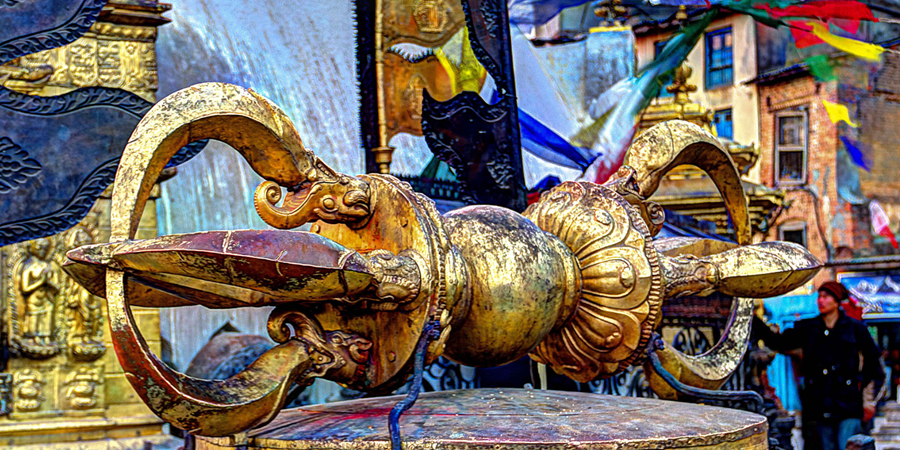
A Beacon of Mahayana Buddhism
The Vajra Dhatu Mandala, prominently placed at the eastern entrance of Swayambhunath, resonates deeply with the teachings of Mahayana Buddhism, particularly the Vajrayana tradition. The vajra, symbolizing the indestructible nature of a diamond and a thunderbolt’s irresistible force, embodies Buddhist wisdom’s unyielding spirit and clarity. This element of the mandala is a focal point for those on a Kathmandu Full Day Tour seeking to delve deeper into Buddhist teachings.
Astrological Elegance and King Pratap Malla’s Vision
Surrounding the vajra, the Mandala intricately portrays twelve animals representing the lunar cycle’s twelve months. This array, encompassing various animals and birds, from tigers to monkeys and rabbits, illustrates time’s continuity and cyclic nature. Commissioned by King Pratap Malla in the 17th century, this feature reflects his commitment to enriching Kathmandu’s cultural and spiritual landscape. The king’s contribution to Swayambhunath, including this mandala, is a highlight in the Best Kathmandu Day Tour, underscoring the intersection of history, art, and spirituality.
Symbolism and Cultural Significance
The Vajra Dhatu Mandala, with its astrological representations and the protective flanking stone lions, captures the essence of cosmic order and protection. It symbolizes the harmonious balance between the earthly realm and the divine. This concept resonates with visitors on a Solo Traveler Kathmandu Day Tour or a Family-friendly Kathmandu Day Tour.
An Embodiment of Resilience and Restoration
Despite the challenges faced over the centuries, including natural disasters like earthquakes, the Vajra Dhatu Mandala’s enduring presence is a testament to Nepal’s resilience and dedication to preservation. It symbolizes the unbroken spirit of Kathmandu and its people, a poignant reminder for all who visit this sacred site.
Swayambhunath: A Mosaic of Spiritual Wonders in Kathmandu
Venture into the sacred realm of Swayambhunath, a centrepiece of the Kathmandu Day Tour, and discover a rich tapestry of spiritual treasures, each narrating a unique aspect of Nepal’s Buddhist heritage.
Swayambhu Buddhist Museum
Swayambhu Buddhist Museum is a treasure trove of Buddhist artistry featuring rare statues, including the serene Sleeping Buddha. This museum, offering free access, is an enlightening start, deepening the understanding of Buddhist traditions for visitors on both Solo Traveler Kathmandu Day Tours and Family-friendly Kathmandu Day Tours.
World Peace Pond
World Peace Pond, where a Buddha statue stands amidst the waters, exuding tranquillity. Participate in the hopeful tradition of flipping coins into the cauldron, a symbolic act of seeking blessings and harmony, making it a memorable part of the Best Kathmandu Day Tour.
Manjushree Chaitya
Explore the Manjushree Chaitya, a revered site associated with wisdom and learning. Known as “Saraswati Sthan”, this chaitya, steeped in lore and history, adds a profound layer to the spiritual exploration in the Kathmandu Day Tour with Guide.
Pancha Buddha Bahan
As you ascend the temple steps, observe the Pancha Buddha Bahan. These statues, symbolizing the vehicles of the Pancha Buddha, including Akshobhya’s Lion and Ratnasambhav’s Elephant, offer insights into Buddhist iconography, enriching the cultural experience of the Kathmandu Full Day Tour.
Agam House (Aagan Chhen)
Discover the Agam House, or Aagan Chhen, a secretive ritual house exclusive to the Buddhacharya priests. This off-limits space adds an element of mystery and exclusivity to the spiritual journey, captivating the curiosity of those on the Best Kathmandu Day Tour.
Diverse Stupas of Swayambhunath
Throughout the complex, witness various stupas showcasing Nepalese Buddhism’s architectural diversity. From the classic white-domed structures to the unique combinations of dome and Shikhar styles and the small stone chaityas, these stupas are a visual treat, highlighting the architectural splendour of the site.
The Five Dhyani Buddhas of Swayambhunath: Embodiments of Enlightened Consciousness
Swayambhunath, a pivotal spiritual site in Kathmandu, is renowned for its stupa and the representation of the Five Dhyani Buddhas. These Buddhas, essential in both Mahayana and Vajrayana Buddhism, symbolize different aspects of enlightened consciousness and are integral to the Kathmandu Day Tour.
Vairocana Buddha (वैरोचन)
- Colour & Element: White, representing ether.
- Direction & Season: Center, associated with autumn.
- Mudra & Shakti: Dharmachakra Mudra, with Vajradhatishvari as Shakti.
- Significance: Located in Swayambhunath’s sanctum, Vairocana Buddha is the temple’s master. His vehicle is a pair of lions, signifying nobility and strength.
Akshobhya Buddha (अक्षोभ्य)
- Colour & Element: Blue, symbolizing water.
- Direction & Season: East, linked to winter.
- Mudra & Shakti: Bhumisparsha Mudra, with Lochana as Shakti.
- Significance: Akshobhya represents cosmic consciousness. His elephant throne denotes the steadfast nature of his vows, with images placed in the eastern direction of stupas.
Ratna Sambhava Buddha (रत्नसम्भव)
- Colour & Element: Yellow, representing earth.
- Direction & Season: South is associated with spring.
- Mudra & Shakti: Varada Mudra, with Mamaki as Shakti.
- Significance: Symbolizing the wisdom of equality, Ratna Sambhava Buddha holds the Cintamani jewel and is depicted in a boon-giving posture. He is associated with vigour and is mounted on a horse throne.
Amitabha Buddha (अमिताभ)
- Colour & Element: Red, symbolizing fire.
- Direction & Season: West, linked to summer.
- Mudra & Shakti: Dhyani Mudra, with Pandara as Shakti.
- Significance: Representing discriminating awareness, Amitabha Buddha faces west in stupas. His peacock throne signifies the ability to alleviate suffering, similar to a peacock consuming poisonous plants yet remaining vibrant.
Amoghasiddhi Buddha (अमोघसिद्धी)
- Colour & Element: Green, representing air.
- Direction & Season: North, associated with the monsoon.
- Mudra & Shakti: Abhaya Mudra, with Tara as Shakti.
- Significance: Amoghasiddhi Buddha embodies all-accomplishing wisdom. Positioned in the north and riding Garuda, he symbolizes fearlessness and air. His distinctive iconography includes being guarded by serpents and his posture of fearlessness.
Cultural and Spiritual Importance
Each of these Five Dhyani Buddhas at Swayambhunath is an artistic representation and a profound symbol of the Buddhist path to enlightenment. Their presence in the complex adds depth to the spiritual experience for visitors, whether on a Solo Traveler Kathmandu Day Tour or a Family-friendly Kathmandu Day Tour.
These Buddhas, with their distinct colours, elements, directions, and mudras, offer a comprehensive understanding of Buddhist teachings and cosmology. Their depictions in Swayambhunath, through statues and paintings, serve as a guide for meditation and contemplation, making them vital elements in exploring this sacred site.
Prayer Wheels: A Journey into Tibetan Spiritual Heritage
In the cultural landscape of Kathmandu, and wherever Tibetan influence prevails, the prayer wheel stands as a poignant symbol of devotion and spiritual practice. These prayer wheels, often encountered during the Kathmandu Day Tour, are not just traditional artefacts but are deeply imbued with religious significance.
Craftsmanship and Diversity
Each prayer wheel, crafted from materials like metal, wood, stone, leather, or coarse cotton, is a testament to the intricate craftsmanship characteristic of Tibetan culture. The cylindrical wheel, gracefully mounted on a spindle, allows for smooth rotation, making it a functional piece of spiritual art.
Mantras: The Heart of the Wheel
Adorning the exterior of the wheel are mantras, typically inscribed in the sacred Ranjana or Tibetan script. The most commonly used mantra, ‘Om mani padme hum’, encapsulates vital Buddhist teachings. These mantras are not merely decorative; they are central to the wheel’s spiritual purpose, with different mantras adding their unique vibrational qualities.
Symbolic Embellishments
Beyond mantras, prayer wheels often feature depictions of dakinis, Dharma Protectors, and the eight auspicious symbols of Buddhism (ashtamangala). These symbols enrich the wheels’ spiritual resonance and serve as a visual guide to Buddhist teachings and cosmology.
The Central ‘Life Tree’
At the core of the prayer wheel lies the ‘life tree’, a structure often intricately decorated with mantras. In larger prayer wheels, this life tree is enveloped in thousands, sometimes millions, of mantra inscriptions, amplifying the wheel’s spiritual potency with each rotation.
The Meritorious Act of Spinning
Tibetan Buddhism holds that spinning a prayer wheel garners the same spiritual merit as orally reciting the prayers. This belief, rooted in ancient texts, underscores the prayer wheel’s role in Tibetan religious practices. Spinning the wheel is a way of disseminating blessings and positive energy into the world.
A Meditative Encounter
Engaging with a prayer wheel offers tranquillity and contemplation for those participating in a Kathmandu Full Day Tour. It’s an opportunity to connect with a centuries-old tradition that seamlessly blends meditation, art, and devotion.
Om Mani Padme Hum: A Mantra of Universal Compassion
“Om Mani Padme Hum” (ॐ मणि पद्मे हूँ) is a central mantra in Tibetan Buddhism, deeply associated with Avalokiteshvara, the bodhisattva of compassion. Featured prominently in the Kathmandu Day Tour, this six-syllabled mantra embodies the essence of Buddhist teachings.
Origin and Meaning
First appearing in the Mahayana Kāraṇḍavyūhasūtra, the mantra symbolizes the “innermost heart” of Avalokiteshvara. It translates to “praise to the jewel in the lotus,” with ‘Padma’ meaning lotus and ‘mani’ signifying jewel. ‘Om’ and ‘hum’ in the mantra represent the universe’s essence and the spirit of enlightenment.
Presence in Tibetan Buddhism
“Om Mani Padme Hum” is integral to Tibetan spiritual practice, inscribed on prayer wheels, flags, and mani stones. It’s a daily reminder of enlightenment, emphasizing compassion and spiritual growth.
Cross-Cultural Significance
The mantra’s influence extends to Chinese Buddhism and Taoism, showcasing its universal appeal.
Explore the Wonders of Boudhanath: A Key Stop in Your Kathmandu Day Tour
After visiting Kathmandu Durbar Square and Swayambhunath, the magnificent Boudhanath Stupa is a must-see destination in your Kathmandu Day Tour. Known as Bouddha, Khasti Chaitya, or Jarung Khashor, this stupa is one of Nepal’s largest spherical stupas but also a symbol of the rich Buddhist heritage in Kathmandu.
Boudhanath: A Stupa of Immense Significance
Located 11 km from central Kathmandu, Boudhanath’s massive mandala design ranks it among the largest stupas globally. This UNESCO World Heritage Site, interring the remains of Kassapa Buddha, is a focal point of Tibetan Buddhism in the city, especially significant since the influx of Tibetan refugees in 1959.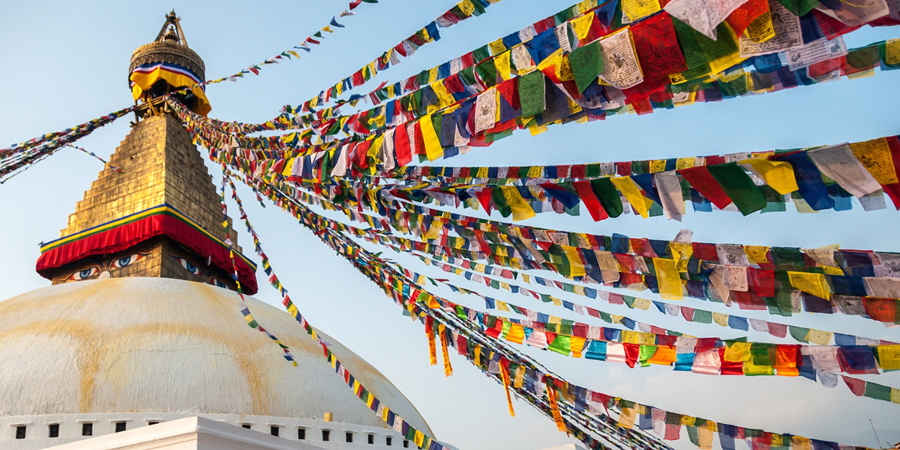
Mythology and Cultural Importance
Boudhanath’s mythology is rich and varied, with stories rooted in Newar and Tibetan Buddhist traditions. One Newar legend tells of a king’s sacrifice leading to the stupa’s creation, while Tibetan mythology recounts an old poultry keeper, Ma-jha-zi-ma, and her sons building the stupa. These tales add layers of cultural depth to your visit.
Historical Context and Modern Significance
The stupa’s history is intertwined with the ancient trade route from Tibet, making it a historical landmark for centuries. Today, Boudhanath is surrounded by over 50 gompas (monasteries) and is a hub for Buddhist practice and teachings, drawing visitors and devotees worldwide.
Aerial View and Tamang Community
An aerial view of Boudhanath reveals its intricate design and grandeur. The surrounding area is home to the Tamang community, an ethnically Tibetan group with deep historical ties to Boudhanath, adding to the stupa’s cultural significance in Kathmandu.
Boudhanath’s Management and Preservation
The stupa’s management, overseen by the Shree Boudha Nath Area Development Committee, ensures the preservation of this sacred site in line with UNESCO’s World Heritage Site requirements.
A Spiritual Experience in Kathmandu
Visiting Boudhanath is a spiritual journey, offering a glimpse into the heart of Buddhist philosophy and practice. As part of your Kathmandu Day Tour, the stupa provides a serene and reflective experience, contrasting with the city’s bustling streets.
Unraveling the Rich History of Boudhanath Stupa: A Central Attraction in Your Kathmandu Day Tour
As part of your exploration on a Kathmandu Day Tour, visiting the Boudhanath Stupa is an opportunity to delve into this iconic Buddhist site’s deep historical and cultural layers. Standing majestically in Kathmandu, this grand stupa holds centuries of history, myths, and legends.
Licchavi and Tibetan Influences
The history of Boudhanath is shrouded in various accounts from the Licchavi period to Tibetan narratives. Licchavi king Śivadeva and King Mānadeva are often credited with their establishment. On the other hand, Tibetan records associate the construction of Boudhanath with Emperor Trisong Detsen of the Tibetan Empire.
Mythology and Legends
Boudhanath’s mythology is as captivating as its architecture. From King Vikramjit’s sacrifice leading to the stupa’s creation to the tale of Jyajhima, the poultry woman from Tibet, each legend adds a unique dimension to Boudhanath’s significance.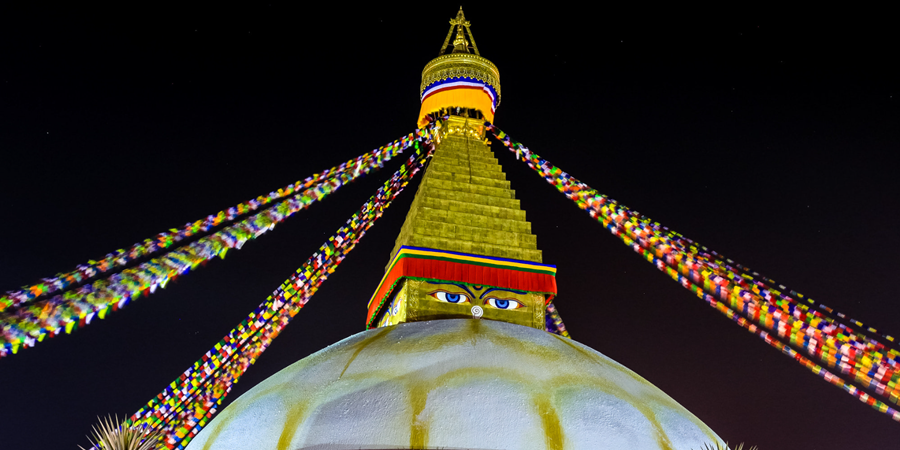
Cultural and Religious Significance
Surrounded by over 50 monasteries, Boudhanath is an architectural wonder and a living centre of Buddhist practice. The Newar and Tibetan communities’ stories around Boudhanath reflect the stupa’s role as a melting pot of cultural and religious traditions.
A Stupa of World Heritage
Recognized as a UNESCO World Heritage Site, Boudhanath is more than a historical monument; it symbolises peace and spirituality. Its massive mandala and dome shape make it one of the largest spherical stupas in Nepal and the world.
Exploring Boudhanath’s Mystique
Your visit to Boudhanath as part of the Kathmandu Day Tour will be a journey through time, uncovering the layers of Buddhist teachings, historical events, and cultural exchanges between Nepal and Tibet. It’s an experience that combines spiritual enrichment with cultural understanding.
Pashupatinath Temple: A Spiritual Landmark in Kathmandu’s Tour Itinerary
Following the visit to Swayambhunath, the Kathmandu Day Tour leads to the Pashupatinath Temple, a revered Hindu shrine near the Bagmati River. As a UNESCO World Heritage Site, Pashupatinath represents the pinnacle of Hindu religious architecture in Nepal and a key destination for spiritual and cultural exploration.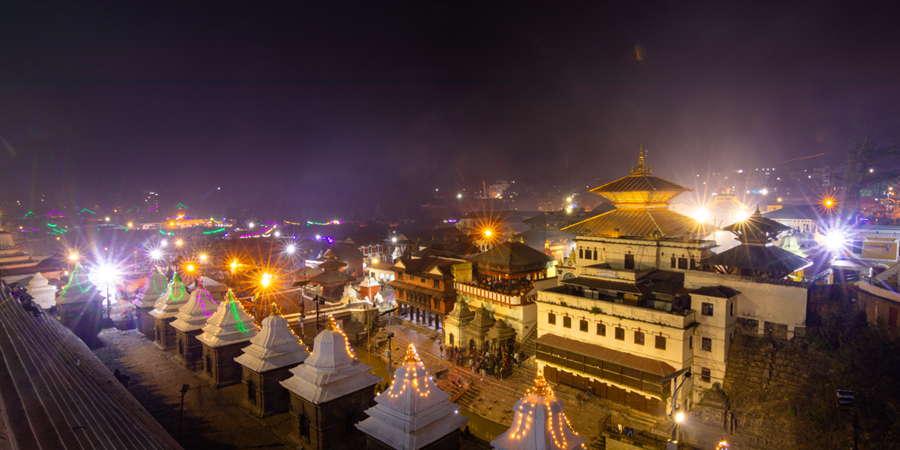
Pashupatinath: The Oldest Hindu Temple in Kathmandu
Pashupatinath, built-in 1692 CE, is the oldest Hindu temple in Kathmandu. Its sprawling complex, covering an area of 246 hectares, is home to over 518 temples and structures, showcasing the architectural magnificence of the Nepalese pagoda style.
Mythology and Cultural Significance
Rich in mythological history, Pashupatinath is shrouded in legends, notably the story of Lord Shiva’s divine linga. This temple is a focal point for Hindu devotees, offering insights into the spiritual practices and traditions of Hinduism in Nepal.
Resilience and Restoration
Despite being partially damaged in the 2015 earthquake, Pashupatinath’s main temple and sanctum sanctorum have withstood the test of time, symbolizing Nepalese culture’s and spirituality’s resilience. The ongoing restoration efforts highlight the commitment to preserving this sacred site.
Discover the Mukhalinga at Pashupatinath Temple: A Jewel of Kathmandu’s Spiritual Landscape
Nestled in the revered Pashupatinath Temple of Kathmandu, the Mukhalinga is a captivating symbol of Lord Shiva’s divine essence, attracting scores of visitors on their spiritual journey in Nepal. This sacred idol, unique to the Pashupatinath Temple – a key destination in the Kathmandu Day Tour – offers a profound glimpse into Hindu religious practices and beliefs.
Mukhalinga: A Symbolic Representation of Lord Shiva
The Mukhalinga, a significant highlight for those visiting Pashupatinath Temple, is an exquisite embodiment of Lord Shiva. Standing one meter tall, this stone idol, adorned with a silver yoni base and a silver serpent, represents Shiva’s various aspects. Each of the four faces, oriented in the cardinal directions, symbolizes different dimensions of Shiva, such as Sadyojata (Barun) and Vamadeva (Ardhanareshwara).
Deep Spiritual Significance in Hinduism
The Mukhalinga’s iconography, with hands holding a rudraksha mala and a kamandalu, resonates deeply with Hindu devotees. Unlike other Shiva lingams in Nepal and India, this idol is typically clothed in golden garments, unveiled only during special rituals like abhisheka. This unique feature makes the Mukhalinga a focal point for those exploring Hindu Temples in Kathmandu.
Cultural Heritage and Rituals at Pashupatinath
As the most venerated aspect of Pashupatinath Temple, the Mukhalinga is central to various rituals, embodying the spiritual heritage of Kathmandu. The practice of dressing the idol and the ceremonial offerings made by the temple priests highlight the rich cultural traditions of Nepal, making it a must-visit for tourists and devotees alike.
The Bagmati River: A Sacred Waterway in Nepal’s Spiritual Landscape
Flowing through the Kathmandu Valley, the Bagmati River is significant in Nepal’s cultural and religious heart. This river, not only a natural landmark but also a spiritual nexus, separates the cities of Kathmandu and Patan before journeying through the Madesh Province and merging with the Kamla River in Bihar, India. Its importance is accentuated in the Kathmandu Day Tour for its natural beauty and profound religious significance.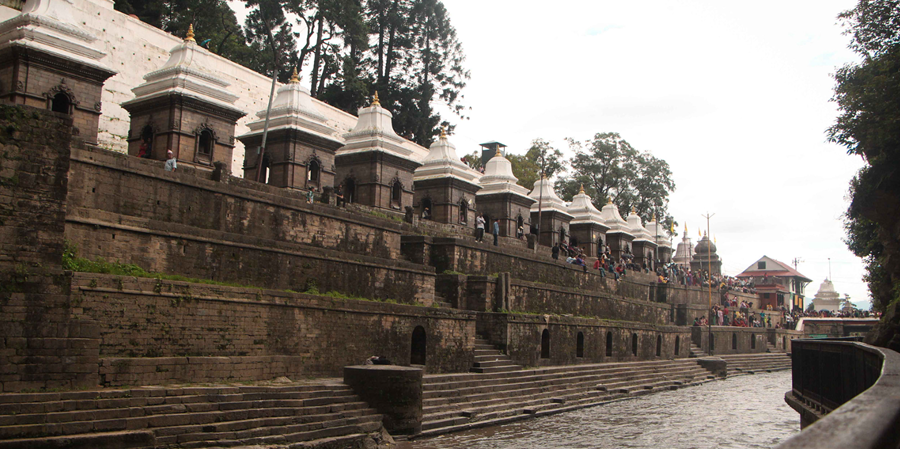
A Holy River for Hindus and Buddhists
Revered by Hindus and Buddhists alike, the Bagmati River is lined with numerous temples, making its banks a site of continuous religious activity. This sanctity renders the Bagmati an integral part of Nepal’s spiritual geography, attracting devotees and tourists to its holy waters.
Rituals and Traditions on the Bagmati
In Hindu tradition, the Bagmati holds a pivotal role in the rituals of life and death. The river’s banks are a common site for cremation ceremonies, where the bodies of the deceased are dipped thrice into the river to break the cycle of reincarnation. The chief mourner, often the deceased’s first son, performs the funeral rites and takes a purifying bath in the river post-cremation. Relatives and mourners also partake in this ritual by bathing in the Bagmati or sprinkling its holy water, seeking spiritual purification.
The Bagmati’s Role in Funerary Customs
For the Kirant community, the hills adjacent to the Bagmati serve as burial grounds, further highlighting the river’s encompassing role in Nepalese funeral customs. This practice underscores the deep connection between the Bagmati and Nepal’s diverse cultural traditions.
Symbol of Spiritual Purification
The belief that the Bagmati River has purifying powers is deeply ingrained in Nepalese culture. For many, a dip in its waters or participation in riverside rituals is a way to attain spiritual cleansing and peace.
Hindu Last Rites and Cremation Rituals in Kathmandu: A Deep Dive into Cultural Practices
In Kathmandu, particularly along the sacred Bagmati River near the Pashupatinath Temple, Hindu last rites and cremation ceremonies are profound rituals encapsulating deep-seated cultural beliefs and practices. These rituals, integral to understanding the local religious ethos, are an insightful aspect of the Kathmandu Day Tour.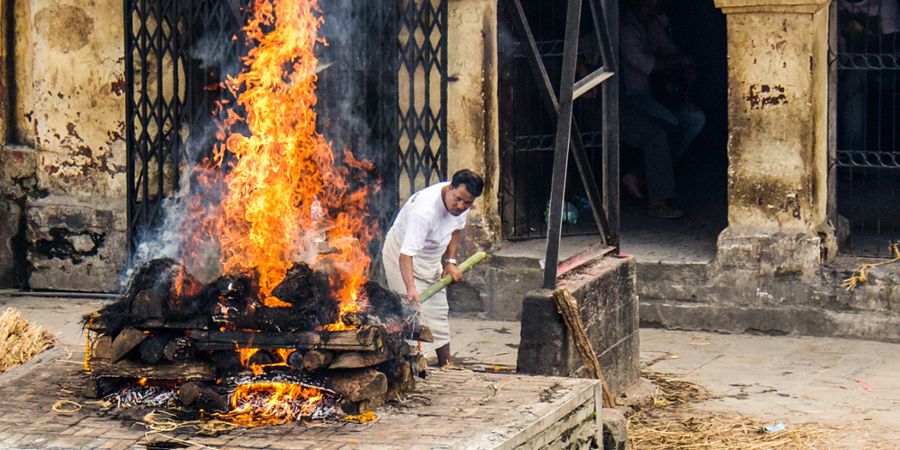
Preparation of the Deceased
After death, preparations for the last rites are completed within a day. The deceased is washed and then wrapped in specific coloured cloth: white for a man or a widow and red for a married woman. The big toes are tied together, and a Tilak, a symbolic mark, is placed on the forehead.
Funeral Procession and Cremation Site
The body is carried to the cremation ground, typically located near a river, with the feet facing south. This direction is associated with Yama, the deity of death in Hinduism.
Cremation Rituals and Ceremonies
The eldest son, or a designated male mourner, takes on the role of the lead cremator. He performs purification rites, including bathing, before leading the cremation process. The ceremony involves circumambulating the pyre with the body, reciting hymns or eulogies, and performing symbolic acts like placing sesame seeds or rice in the mouth of the deceased. Ghee is sprinkled on the body and pyre, and lines representing Yama and Kala (the deity of cremation) and the deceased are drawn.
Significant Rituals During Cremation
Before lighting the pyre, an earthen pot filled with water circled the body and broke near the head. This act symbolizes the severing of earthly ties. The ritual of kapala kriya, where the skull is pierced to release the spirit, is performed once the pyre is ablaze.
Post-Cremation Practices
Attendees typically bathe after the ceremony to cleanse themselves of impurities associated with death and cremation. The cremation ash is later consecrated to a nearby river, signifying the return of the physical body to the elements.
Community Remembrance and Meals
In the days following the cremation, male relatives often shave their heads and beards in mourning. Communal meals are organized, usually on the eleventh to thirteenth day, where the community gathers to remember the deceased. These events sometimes include offering meals to the needy to remember the departed soul.
Understanding these rites provides insights into Hindu beliefs regarding life, death, and the afterlife. For visitors to Kathmandu, witnessing these rituals is a profound experience, revealing the rich tapestry of religious and cultural practices in Nepal.
Encountering Sadhus in Pashupatinath Temple during Your Kathmandu Day Tour:
Pashupatinath Temple, a UNESCO World Heritage Site and one of Nepal’s holiest Hindu shrines offers a rich cultural experience during your Kathmandu Day Tour. One of the unique aspects of this tour is the opportunity to encounter Sadhus, ascetic Hindu holy men who often gather around the temple premises.
Who are Sadhus?
Sadhus are devout followers of Lord Shiva, known for their distinctive appearance and austere way of life. Dressed in saffron robes, adorned with ash, and often sporting colourful body paint, Sadhus led a life of renunciation and meditation. Meeting them is like stepping into a world of spirituality and devotion.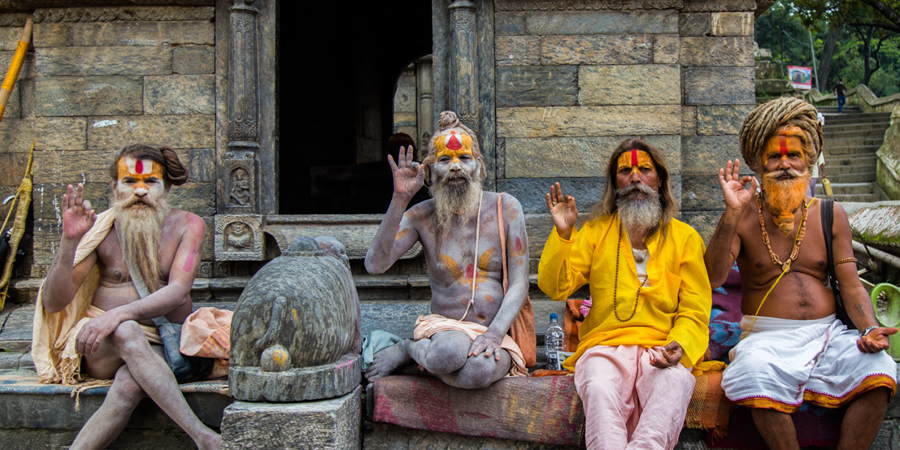
Where to Find Sadhus in Pashupatinath?
As you explore Pashupatinath during your Kathmandu Day Tour, you’ll likely spot Sadhus near the temple’s sacred ghats along the Bagmati River. These serene surroundings are where they meditate, offer blessings, and perform rituals.
Interacting with Sadhus
During your Kathmandu Day Tour, you can approach Sadhus respectfully and curiously. Many are open to conversations, allowing you to learn about their spiritual practices, beliefs, and why they have chosen this unique life path.
Photography and Offerings
It’s essential to respect their privacy and seek permission before taking photographs. Some Sadhus may offer blessings or perform rituals in exchange for donations, providing an authentic cultural experience.
Enhancing Your Kathmandu Day Tour
Encountering Sadhus in Pashupatinath adds a captivating layer to your Kathmandu Day Tour. It offers a glimpse into the deep-rooted religious traditions and spiritual hunger that permeate Nepal’s cultural tapestry.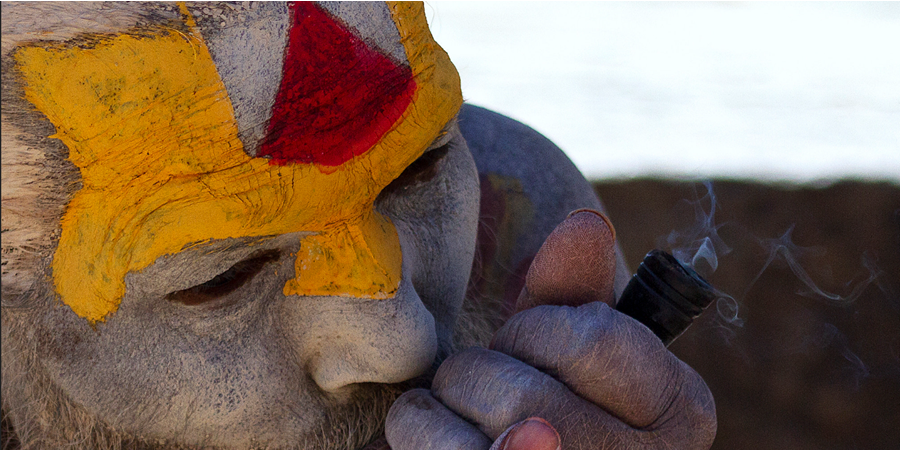
Meeting Sadhus in Pashupatinath Temple during your Kathmandu Day Tour is a remarkable experience that allows you to connect with the spiritual heart of Nepal. With their unique appearance and profound devotion, these holy men offer insights into the region’s rich religious heritage, making your tour informative and culturally enriching.
Pashupati Bagmati Aarati at Pashupatinath Temple: Extension on Your Kathmandu Day Tour
When you visit Pashupatinath Temple during your Kathmandu Day Tour, the Pashupati Bagmati Aarati is an experience you shouldn’t miss. This ritual, performed on the banks of the sacred Bagmati River, is a profound expression of spirituality in Kathmandu.
Sacred Bagmati River: A Centerpiece of Worship
As you witness the Aarati beside the Bagmati River, which flows through the Pashupatinath Temple, you’ll feel immersed in a tradition steeped in Hindu beliefs. The river’s significance in purifying the soul becomes palpable during the Aarati ritual.
Pashupati Bagmati Aarati: A Spiritual Sojourn
The Aarati, starting at 6 pm, involves priests rhythmically moving oil lamps in dedication to the divine. Joining in the Bhajans sung by devotees during the Aarati, you’ll be enveloped in a serene yet powerful ambience.
Engaging in Time-Honored Traditions
Being part of this daily evening ceremony is a highlight of the Kathmandu Religious Tour, particularly on Mondays and during festivals like Maha Shivaratri and Haritalika Teej, when the temple’s spiritual energy is at its peak.
Tandav Dance: A Tribute to Lord Shiva
During the Aarati, the Tandav dance, symbolic of Lord Shiva, adds an element of divine reverence. Participating in or observing this dance is a unique cultural experience, enriching your understanding of Hindu rituals.
Universal Prayers for Humanity
The collective prayers during the Aarati, aiming for the betterment of all humanity, align with the Hindu philosophy of universal well-being. This communal aspect of the Aarati emphasizes the inclusive nature of spiritual practices in Kathmandu.
A Must-Experience on Your Kathmandu Itinerary
Your participation in the Pashupati Bagmati Aarati during your Kathmandu Day Tour goes beyond mere observation – it’s an active engagement in a centuries-old spiritual practice, offering a deeper connection with Kathmandu’s rich religious heritage.
In summary, the Pashupati Bagmati Aarati at Pashupatinath Temple is not just a ritual; it’s a transformative experience that encapsulates the essence of Kathmandu’s spiritual life, making it a crucial part of any spiritual or cultural exploration in the city.
Explore Historical and Religious Sites in Nepal: Entry Fees and Information for Tourists during Kathmandu Day Tour
Nepal, rich in cultural and religious heritage, offers many sites for exploration, especially during a Kathmandu Day Tour. Understanding the entry fees and regulations is essential for a smooth and enriching experience. Here’s a comprehensive guide for tourists on the entry fees for major attractions in Kathmandu
| Site | Foreign Nationals | SAARC Nationals | Chinese | Nepalese | Remarks |
|---|---|---|---|---|---|
| Kathmandu Durbar Square | NPR 1000 | NPR 150 | NPR 1000 | Free | Below ten years of free |
| including Tribhuvan Museum | |||||
| Swayambhu Stupa | NPR 200 | NPR 50 | NPR 200 | Free | Below ten years of free |
| Bouddha Stupa | NPR 400 | NPR 100 | NPR 400 | Free | Below ten years of free |
| Pashupatinath Temple (per day entry) | NPR 1000 | NPR 1000 | NPR 1000 | Free | Tourists can view temple premises |
| (Free for Indian Nationals) |
When you set out on your Kathmandu Day Tour, embracing the local culture and traditions enhances your experience. Here’s a guide to help you navigate through the historical and religious sites of Kathmandu with respect, safety, and ease, along with information on the provided guide and transport services:
Dress Code and Respectful Conduct
- Appropriate Attire: Choose clothes that cover shoulders and knees for visits to religious sites like Kathmandu Durbar Square, Swayambhunath, and Pashupatinath Temple.
- Silence is Respectful: Maintain a quiet demeanour, especially during sacred practices like the Kumari Darshan at Kathmandu Durbar Square.
- Mindful Photography: Refrain from taking photos during sensitive ceremonies and always ask for permission where necessary.
Safety Measures
- Caution with Monkeys: At Swayambhunath, also known as the Monkey Temple, be careful with food and drinks, as monkeys are attracted to these items.
- Guard Your Belongings: Be vigilant with items, particularly in crowded places.
- Sun Protection: Carry water for hydration and use sunscreen for protection against the sun, especially during the day.
Tour Services for Your Comfort
- Professional Guide: The tour includes the expertise of a local guide, offering in-depth information and stories about each site.
- Transportation Provided: Comfortable and reliable transport is arranged for the entire tour, allowing you to travel between sites easily.
Additional Tips
- Cultural Awareness: Adhere to local customs, such as walking clockwise around Buddhist stupas.
- Health Considerations: Wear a hat and sunglasses to stay comfortable in sunny conditions.
- Follow Your Guide’s Lead: Your guide will provide valuable insights and instructions to navigate each site effectively.
Enjoying Your Kathmandu Day
On your Kathmandu Day Tour, you’ll explore and connect with the city’s historical and spiritual essence. With the proper attire, respectful behaviour, and adherence to safety guidelines, complemented by expert guiding and transport services, your tour is set to be a memorable exploration of Kathmandu’s rich heritage. Relish in the diverse experiences these historical and religious sites offer, comfortably and informatively.
Experience the Wonders of Nepal: The Second Option of Our Kathmandu Day Tour
Delve into the enchanting world of Nepal’s capital with the second option of our Kathmandu Day Tour, tailor-made for an unforgettable experience. This tour is a perfect fit for everyone, from solo adventurers to families, offering a unique opportunity to explore the cultural and historical landmarks of Kathmandu.
Our journey begins at the iconic Bhaktapur Durbar Square, a UNESCO World Heritage Site that stands as a testament to Nepal’s rich historical legacy. As you wander through its ancient pathways, the stories of Nepal’s royal heritage come alive around you. Bhaktapur’s stunning architecture and vibrant cultural scene make it an essential part of the Kathmandu experience.

Next on our itinerary is the exquisite Patan Durbar Square, another highlight of the Kathmandu Valley. Renowned for its artistic architecture and centuries-old craftsmanship, Patan is a treasure trove of traditional Nepalese art. The intricately carved buildings and historic ambience provide a deep dive into the artistic soul of Nepal.
The final destination of our tour is the serene Swayambhunath Stupa, popularly known as the ‘Monkey Temple.’ Located atop a hill, it offers a peaceful retreat with panoramic views of Kathmandu. This sacred site, symbolizing the harmony between Hindu and Buddhist cultures, offers a tranquil conclusion to our day’s exploration.
This second option of our Kathmandu Day Tour goes beyond mere sightseeing. It’s an immersive journey into the heart and spirit of Kathmandu, combining cultural exploration, historical insights, and spiritual enrichment. We invite you to join us on this extraordinary tour, promising an experience that will resonate with you long after your visit.
Bhaktapur: A Cultural Odyssey in the Heart of Nepal
Immerse yourself in the enchanting world of Bhaktapur, Nepal’s city of devotees. This ancient Newa town, nestled within the Kathmandu Valley, is a haven for those seeking a blend of pilgrimage, religion, and rich cultural heritage. Bhaktapur, often featured in the best Kathmandu day tours, offers a unique experience, distinct from the capital city yet conveniently located just 8 miles away.
Exploring the Heritage of Bhaktapur
Bhaktapur, a highlight of many Kathmandu full-day tours, is a living museum that proudly displays its history, dating back to around 865 AD. As you walk its ancient streets, you’re walking through a city where, at one point, temples and deities outnumbered houses and people. This remarkable aspect makes Bhaktapur a key feature in family-friendly Kathmandu day tours and solo traveler itineraries alike.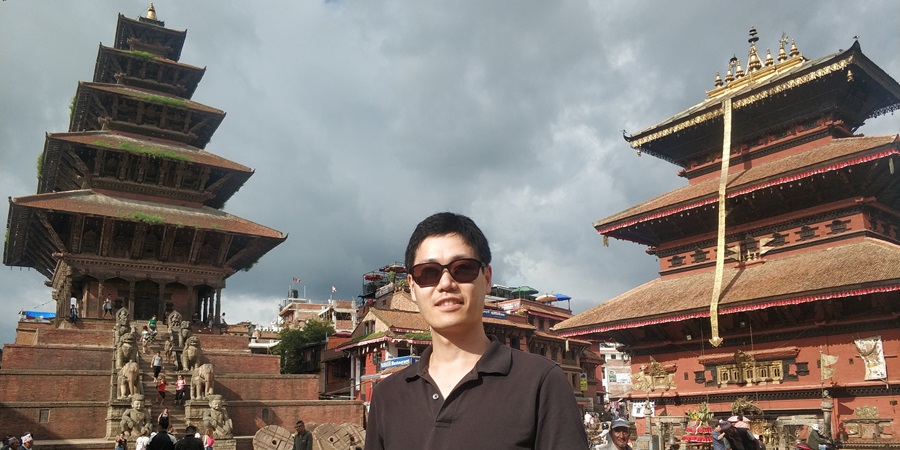
Cultural Sightseeing in Bhaktapur
A must-visit for anyone taking a Kathmandu day tour with a guide, Bhaktapur Durbar Square stands as a testament to the city’s glorious past. This UNESCO World Heritage Site, along with the Changu Narayan temple, are essential stops on the best Kathmandu day tours. The Golden Gate and Nyatapola Temple, Nepal’s tallest temple, are among the many monuments that enrich Bhaktapur’s cultural landscape.
A Culinary Experience in Bhaktapur
No Kathmandu day tour is complete without indulging in the local cuisine. Bhaktapur offers a taste of authentic Newari dishes, including the famed Ju Ju dhau. This sweet, king of curds, along with the traditional homemade wine ‘aela’, is a must-try for those on an affordable Kathmandu day tour, seeking to experience the region’s culinary delights.
Festivals and Jatras in Bhaktapur
The vibrant festivals and jatras of Bhaktapur are central to the unique Kathmandu day tour experiences. The Biska Jatra and Gai Jatra are just a couple of the many festivals that showcase the city’s rich cultural tapestry, making it a highlight of any Kathmandu day tour itinerary.
Evening Ambiance at Bhaktapur Durbar Square
The Bhaktapur Durbar Square offers an unforgettable experience, especially during the evening. This part of the tour is often a highlight for visitors on the best Kathmandu day tours, as they witness the square bathed in the soft glow of sunset, creating a serene and picturesque setting.
Pottery and Art in Bhaktapur
Bhaktapur’s Pottery Square is a testament to the city’s artistic legacy, often included in Kathmandu full-day tour packages. Here, visitors can witness the traditional art of pottery, an integral part of Bhaktapur’s cultural identity.
Spiritual Exploration in Bhaktapur
For those seeking a religious journey, Bhaktapur offers an array of temples and spiritual sites, often included in guided Kathmandu day tours. The city’s spiritual ambience is a draw for many visitors, adding a unique dimension to their experience.
Museum Visits in Bhaktapur
Bhaktapur’s museums, featuring artefacts and art from different eras, are often highlights of the best Kathmandu day tours. These museums provide a deeper understanding of the city’s historical and cultural significance.
Shopping in Bhaktapur
An affordable Kathmandu day tour often includes shopping in Bhaktapur, where visitors can purchase unique souvenirs like Newari dresses, thangka paintings, and handmade crafts, reflecting the city’s rich artistic heritage.
Bhaktapur is not just a destination on a Kathmandu day tour; it’s an experience that embodies the essence of Nepal’s history, culture, and spirituality. Whether you’re on a solo traveller Kathmandu day tour or a family-friendly excursion, Bhaktapur promises an enriching, unforgettable journey through the heart of Nepalese heritage.
Exploring Patan Palace Square: A Glimpse into Nepal’s Regal Past
Discover the historic charm of Patan Palace Square, locally revered as Mangal Bazaar, a name deeply rooted in the auspiciousness of Sanskrit and Newari traditions. This central square, often highlighted in the best Kathmandu day tours, stands as a vibrant symbol of Nepal’s regal history and cultural richness. Located in the heart of Patan, it is a must-visit destination for those embarking on a Kathmandu full-day tour.
Patan Palace Square: A Cultural Epicenter
Patan Palace Square, or ‘Mangah’ in Old Newari, meaning ‘Center’, is a testament to the legacy of the Mallas. Over two centuries, this royal dynasty transformed the square into an architectural marvel, adding monuments, pillars, and shrines that today form a key part of any Kathmandu day tour with a guide.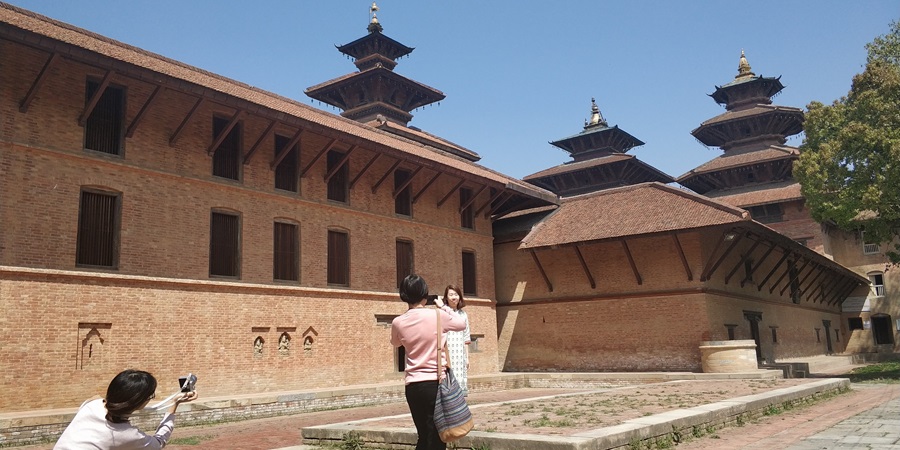
The Myths and Legends of Patan
Despite some historical ambiguities, the palace’s past is ingrained in Patan’s folklore, rich with conflicting legends and myths. These stories, often narrated in Kathmandu full-day tours, add layers of intrigue to the Palace Square. Ancient inscriptions dating back to 643 AD and 560 AD, found in Keshav Narayan Chowk and near Manidhara, offer glimpses into the square’s storied past.
The River Legend and Buddhist Heritage
A fascinating tale recounts a river, now an underground channel, which once flowed along the palace front. This site, significant in Buddhist history, is commemorated during the holy month of Gunla. On Kathmandu day tours, guides often recount how a Buddha image is immersed in sacred waters here, a ritual steeped in tradition.
Chaukot: The Palace’s Historical Identity
The term “Chaukot”, used in 1630 AD, reflects the palace’s architectural heritage, characterized by its four towers. Modern visitors on a Kathmandu day tour can still see remnants of this design in the surviving tower pavilions. The palace, as it stands today, owes much to the renovations by King Vishnu Malla in 1734 AD, a highlight for those interested in historical architecture on a Kathmandu day tour.
Patan Museum: Preserving History
Since its transformation into the Patan Museum in 1997 AD, the palace has served as a beacon of historical and cultural preservation. This museum is a focal point for family-friendly Kathmandu day tours, offering an insightful look into Nepal’s artistic and royal heritage.
Why Visit Patan Palace Square?
A visit to Patan Palace Square is essential for anyone on a Kathmandu full-day tour. It’s not just a sightseeing spot but a journey into the heart of Nepalese history and culture. Whether you’re a solo traveller or part of a family-friendly Kathmandu day tour, the square offers an unparalleled glimpse into the rich tapestry of Nepal’s past.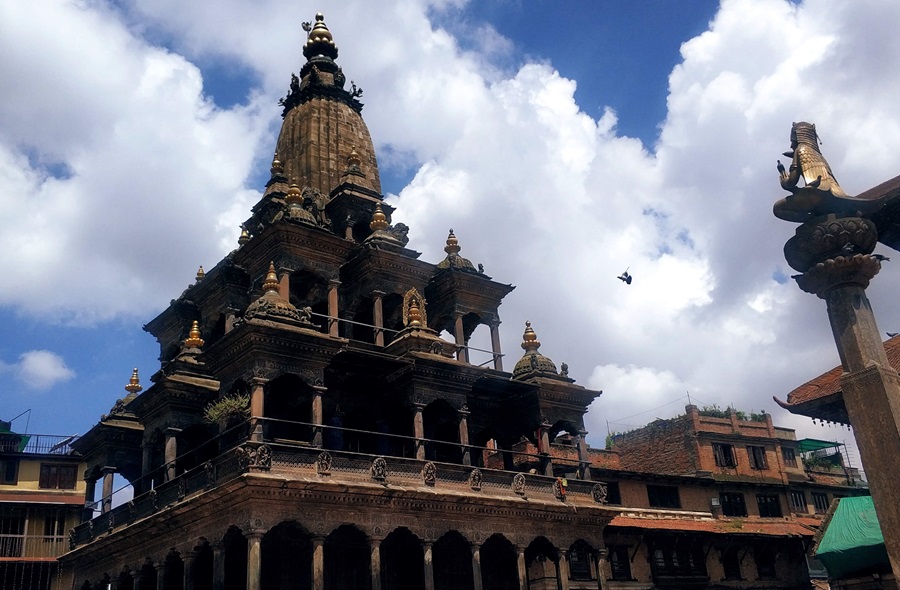
In summary, Patan Palace Square, or Mangal Bazaar, is a destination that combines historical grandeur with cultural depth. Its legends, architecture, and transformation into the Patan Museum make it a key highlight of any Kathmandu day tour, inviting visitors to delve deep into the soul of Nepalese history and heritage.
Reviews on Kathmandu Day Tour
Be first to post a review in this trip.



